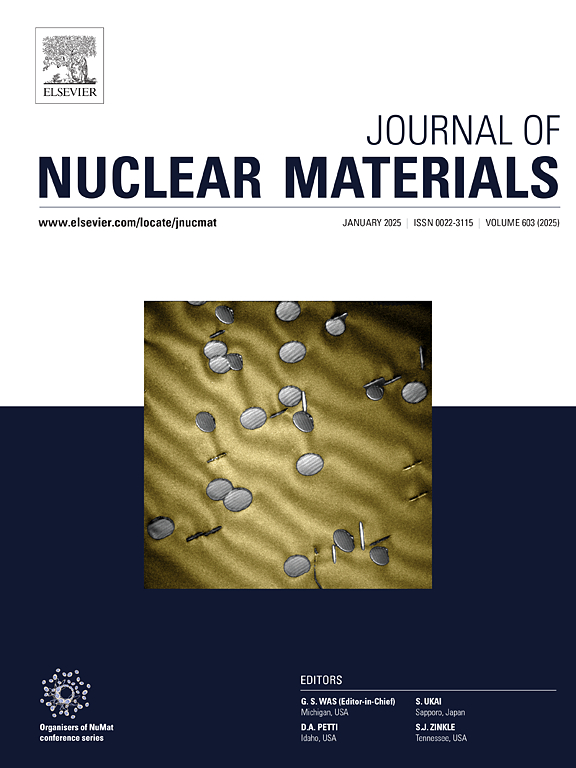Effect of neutron irradiation on microstructural evolution and deformation behavior of Zirconium (Zr-1Nb) alloy
IF 2.8
2区 工程技术
Q3 MATERIALS SCIENCE, MULTIDISCIPLINARY
引用次数: 0
Abstract
In this study, a detailed investigation was carried out on the recrystallized Zirconium (Zr-1Nb) alloy, irradiated in the reactor core of Temelín NPP (VVER-1000) for a duration of four annual cycles within the framework of the ALVEL-ČEZ project. The main objective of the present work is to report the microstructural evolution, with a particular focus on the radiation-induced defects and elucidate the underlying deformation mechanisms. The combined use of electron backscattered diffraction and scanning transmission electron microscopy enables to obtain the statistical details of the microstructural changes in the irradiated material. To assess the deformation behavior of the irradiated Zr-1Nb alloy, tensile testing was conducted at room temperature and 350 °C and a strain rate of 2 × 10-3 s-1 along the axial direction of the tube. Transmission electron microscopy observations on the deformed sample revealed the presence of dislocation-free channels within the grains. Based on the stereographic trace analysis, it was determined that slip occurred through prismatic, pyramidal and basal channels. Additionally, the type twinning system was also found to be activated in the deformed sample.
求助全文
约1分钟内获得全文
求助全文
来源期刊

Journal of Nuclear Materials
工程技术-材料科学:综合
CiteScore
5.70
自引率
25.80%
发文量
601
审稿时长
63 days
期刊介绍:
The Journal of Nuclear Materials publishes high quality papers in materials research for nuclear applications, primarily fission reactors, fusion reactors, and similar environments including radiation areas of charged particle accelerators. Both original research and critical review papers covering experimental, theoretical, and computational aspects of either fundamental or applied nature are welcome.
The breadth of the field is such that a wide range of processes and properties in the field of materials science and engineering is of interest to the readership, spanning atom-scale processes, microstructures, thermodynamics, mechanical properties, physical properties, and corrosion, for example.
Topics covered by JNM
Fission reactor materials, including fuels, cladding, core structures, pressure vessels, coolant interactions with materials, moderator and control components, fission product behavior.
Materials aspects of the entire fuel cycle.
Materials aspects of the actinides and their compounds.
Performance of nuclear waste materials; materials aspects of the immobilization of wastes.
Fusion reactor materials, including first walls, blankets, insulators and magnets.
Neutron and charged particle radiation effects in materials, including defects, transmutations, microstructures, phase changes and macroscopic properties.
Interaction of plasmas, ion beams, electron beams and electromagnetic radiation with materials relevant to nuclear systems.
 求助内容:
求助内容: 应助结果提醒方式:
应助结果提醒方式:


